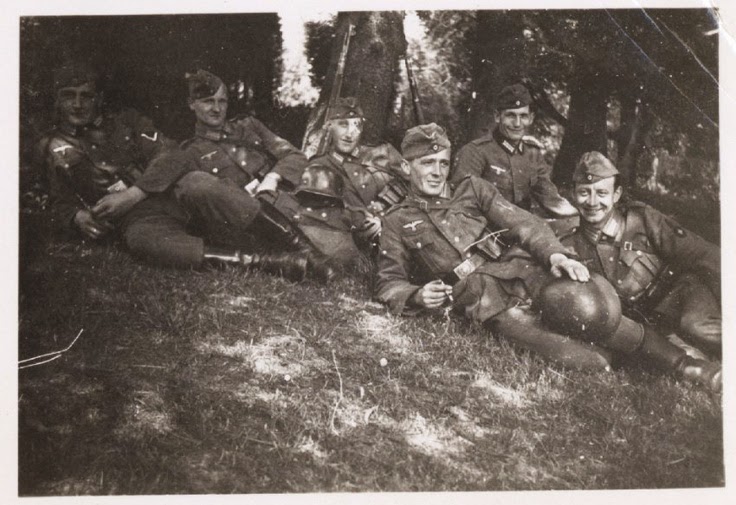The channel islands were the only part of Britain to be under the occupation of the Nazis, and after 5 years the island was liberated on the 9th May 1945. The Nazis invaded Jersey one week after the British government demilitarised the island, as they feared the safety of the people in the event of conflict. The Germans were not aware of this, and heavily attacked the island. 10 people were killed and many were also wounded.
Island life
Under the command of the Nazi soldiers, life became very different for the citizens of Jersey. A shortage of fuel meant that horse and cartridges were used instead of cars, and the soldiers forced people to drive/ride on the opposite side of the road. People had to also get used to living with limited amounts of information as radio sets became banned. Some islanders risked hiding them, and took it upon themselves to spread news about what was happening on the frontline to others.
There was a shortage of many supplies on the island during this time. Islanders became smart at coming up with substitutes for things they no longer had access to. Sea water was commonly used as salt, and parsnip paired with sugar beet replaced tea. The SS Vega was a relief ship provided by the Red Cross that saved the starving islanders. The ship arrive on December 30th, providing the people of Jersey with food and much needed medical supplies that the island was in desperate need of.
Fortification
Hitler ordered that Jersey should become a fortress which no one could get into. May slave workers from places like Spain, Russia, Poland and France built many bunkers and tunnel systems which are still around to this day. one of the most prominent fortification is HO8, which has now been converted into the Jersey War Tunnels where visitors can go and experience what life was like for islanders under the occupation. There are also many fortification sites around Jersey’s coasts, especially in St Ouens.
The Jersey war tunnels website contains a variety of interesting stories passed down through families about the occupation. They’re all very interesting as they’re all about what ordinary citizens went through in their lives. Below is one a story taken from the website which I found particularly interesting:
Unsung heroes
As German forces advanced relentlessly through northern France into Normandy and Brittany, hundreds of thousands of Allied troops were trapped with their backs to the sea. The British Admiralty organised a rescue mission – often called ‘Little Dunkirk’ – to evacuate them from French ports, including St Malo, 50 miles south of Jersey.
– Taken from the Jersey war tunnels website, full story here.
Dunkirk had shown that small boats would be an important part of the operation; they could pick up troops in shallow water, then take them to larger transport ships anchored in deeper water. So on the 16th June 1940 the Admiralty sent a Telegram to Jersey’s Lieutenant Governor requesting that “… Jersey send all available craft to St Malo to help the evacuation of British troops from there…”
Liberation
On may 8th 1945, in Winston Churchill’s famous speech, he mentions:
“and our dear Channel Islands are also to be freed today.”
Jersey people only officially knew the war was over, the following day when the HMS beagle was seen in St Aubin’s harbour. On May 9th at 7:15, the instrument of surrender was signed on behalf of the German command of the Channel Islands. All German flags in the Channel Islands were then lowered. On the arrival of the liberators, the swastika that was hanging on the Pomme D’Or hotel was taken down and replaced by a union jack at 3:40 showing the end of the occupation. The crowd gathered then began singing the national anthem. This day is still celebrated every year in Jersey with a bank holiday.



